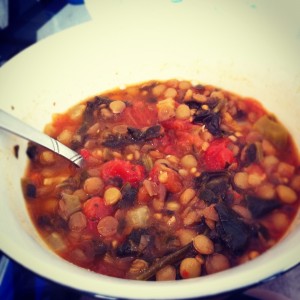Let’s have Lentils tonight!
Have you ever seen those tiny, thin skinned, disk shaped legumes? Maybe in the store, a soup recipe, hippie restaurant? Well, I want you to give them a try. They are usually dried, sometimes come split and rarely come in a can.
Lentils are a staple in the Middle East, and especially in India. More surprising, is that the United States exports more than 75% of the crop! Maybe it is because we don’t know how to cook it? Or how nutritious it is? I am not sure why more people are not eating this superfood, but I hope after you know more about this ingredient, you will try one of the hundreds of varieties. Here is a quick description of the most common forms of lentils:
- Brown Lentils: these lentils are either brown or black in color, and generally hold their shape while cooking. Great for recipes like lentil tacos or lentil spinach soup!
- Red Lentils: These lentils are orange or red colored lentils, and may ne more popular in the Middle East to find then here in the United States. These cook very quickly and tend to fall apart when cooked. Red lentils are used in many Indian style recipes, such as Dals. They also make a good puree for thickening soups.
- Green Lentils: These lentils have a dark green/ green-brown color. They may take a little longer to cook then brown lentils, but they also hold their shape well when cooking. Great for chili, soups, or veggie burgers.
Why should you incorporate more lentils into your diet? Look at the Nutrition Facts:
- Serving Size: 1/2 cup cooked lentils
- Calories: 115
- Total Fat: 0.5g
- Total Carbohydrates: 20g
- Dietary Fiber: 8 g
- Sugars: 2 g
- Protein: 9 g
- Calcium: 19mg
- Iron: 4mg
- Also a good source of the B vitamins!
- WHAT A POWERHOUSE!!!
Who lentils are good for?
- The vegetarian: Lentils add a great source of protein and iron, with low calories and fat!
- The person with Diabetes: High in dietary fiber, a healthy source of carbohydrates, low in calories and fat, lentils will help you control your blood sugars when replacing other simple sugars and carbohydrates.
- The person trying to lose weight: The fiber and protein will fill you up in a low amount of calories.
- The person looking for variety: Sick of the same ole’ routine in your diet? Mix it up with lentils
How to cook lentils:
There should be a description the back of the bag or box when you purchase lentils, but in case it doesn’t, you can follow these instructions:
- Measure the amount you wish to use in your recipe. Usually one cup dry lentils yields about 2 cups cooked lentils.
- Sort through lentils like you would any other bag of dried beans, looking for any cracked or broken lentils and any stones that may have gotten in the bag.
- Rinse under cold water.
- Place lentils in a small sauce pan and cover with water. Use twice as much water as you did lentils.
- Bring water to a boil, and simmer on low.
- Cook until desired tenderness is reached. It will take longer for older lentils and green lentils. Usually takes about 20-25 minutes for brown lentils and 15 minutes for red lentils.
- Drain and rinse if necessary.
- Follow instructions for recipe.
- If you make a whole bag of lentils, and only need a portion of them, you can freeze the remaining for later recipes. Dry the lentils well. Portion into 1 or 2 cup servings and put into a zip-lock bag. Label the date and portion size. Save until later when needed!
One of my favorite recipes: Lentil Spinach Soup
Ingredients:
- 2 tbs olive oil
- 3 cups cooked brown lentils
- 3 cups frozen flat-leaf spinach
- 1 20 oz jar crushed tomatoes
- 2 cups water
- 1 tsp crushed red pepper
- 2 stalks celery, diced
- 3 garlic cloves, mined
- 3 large carrots, diced
- 1/2 green bell pepper, diced
- 2 Tbs cumin
- 1/4 tsp sea salt
- 1/2 tsp black pepper
Directions:
- In a large pot on the stove, sauté the onion, garlic and celery in the olive oil until the onion and celery are soft.
- Add all of the remaining ingredients.
- Cook on medium heat for about 20 minutes
- Enjoy!
